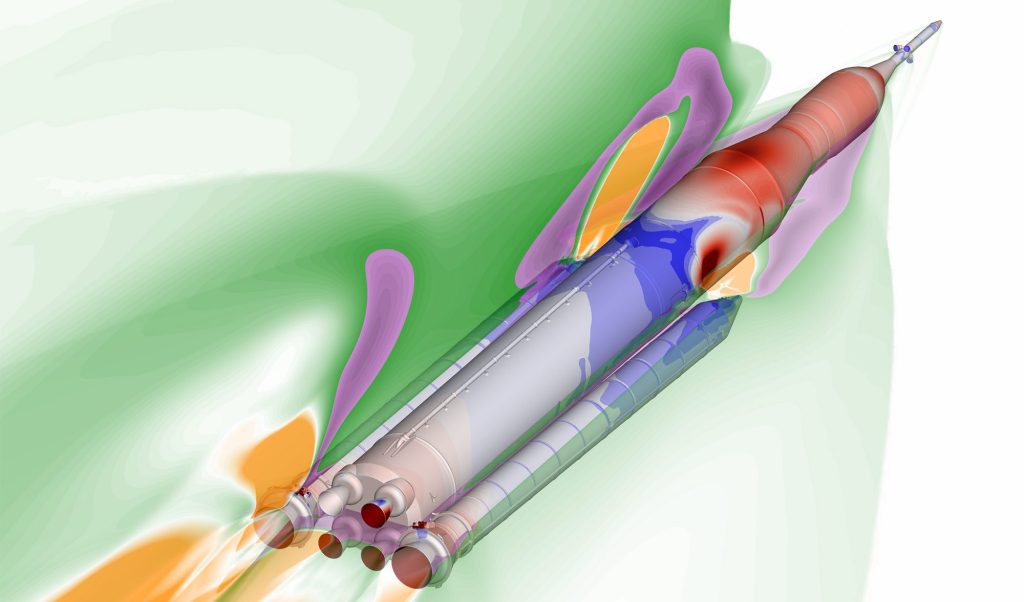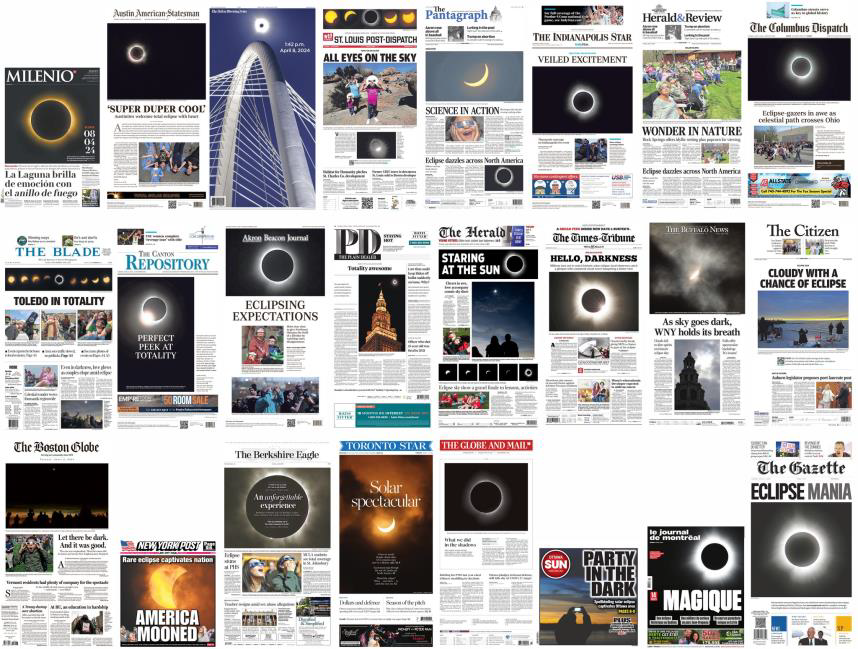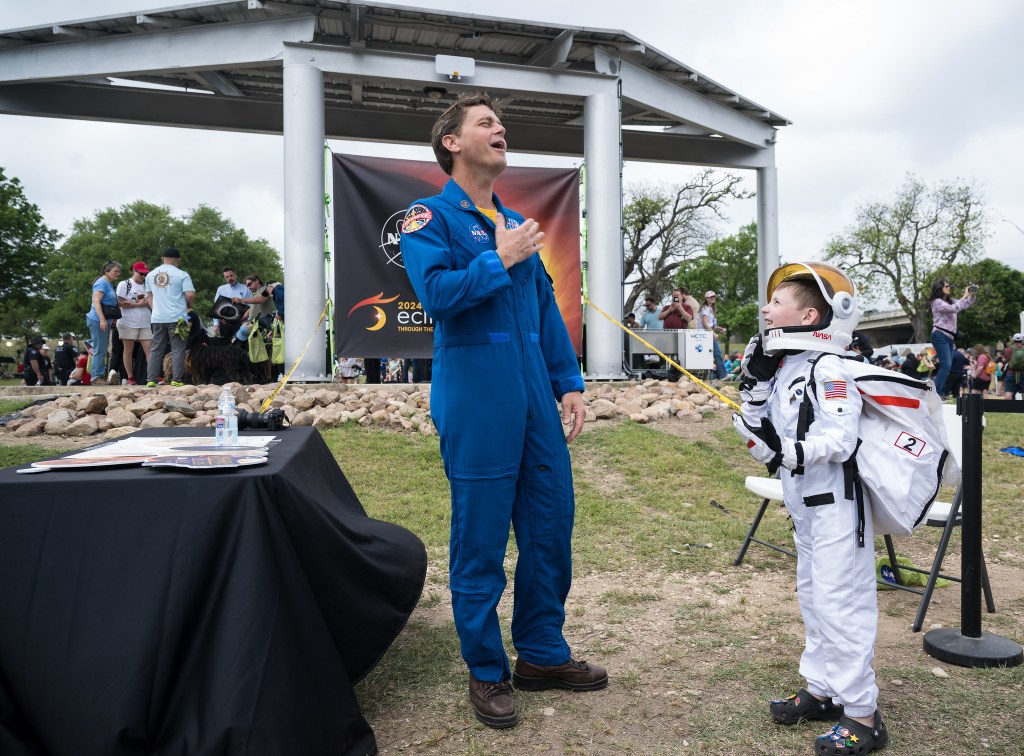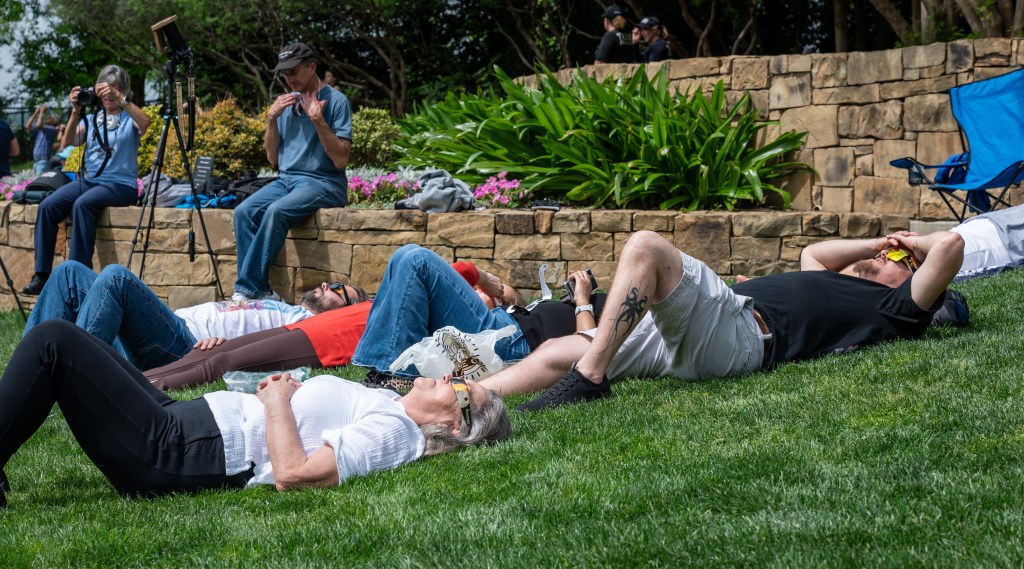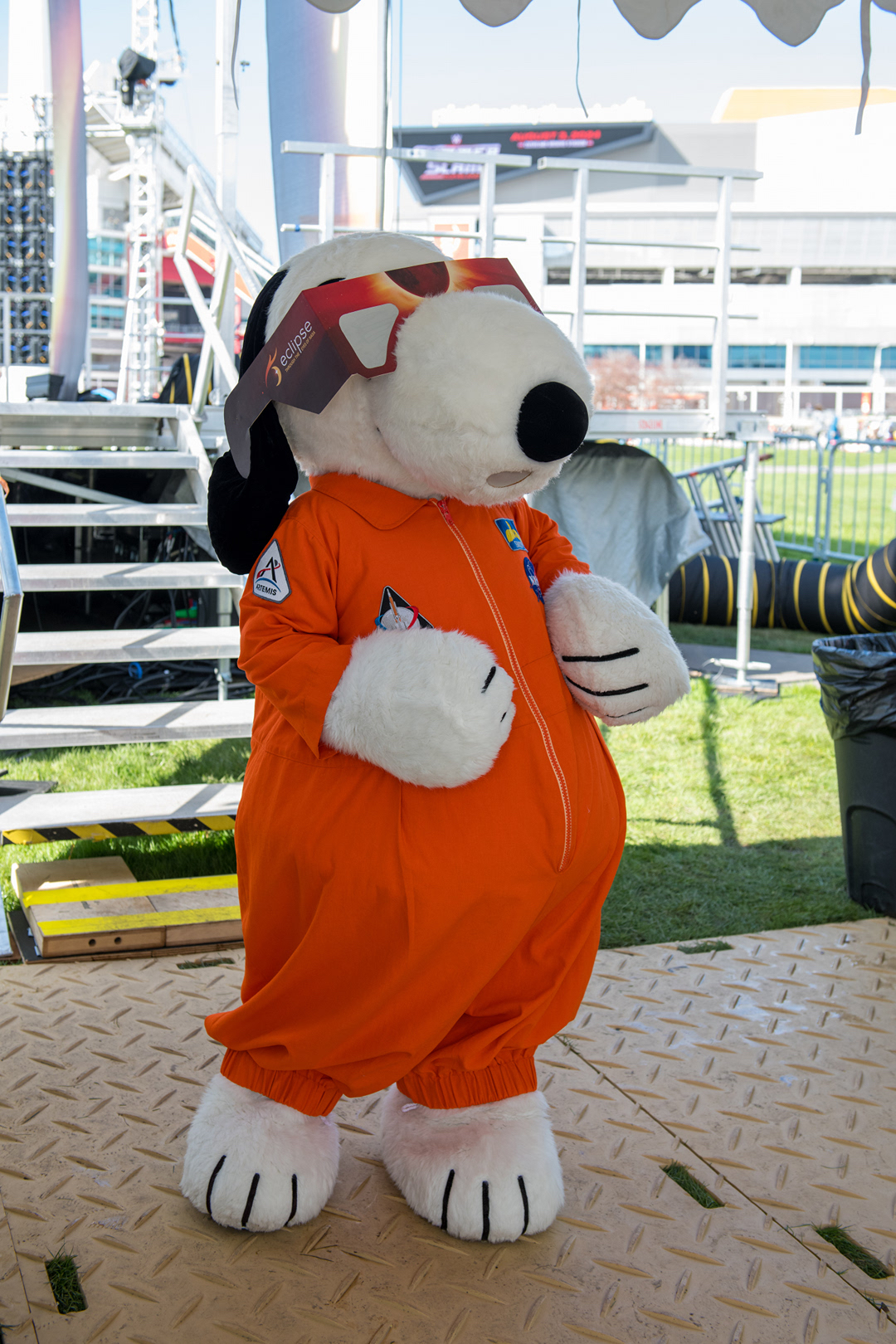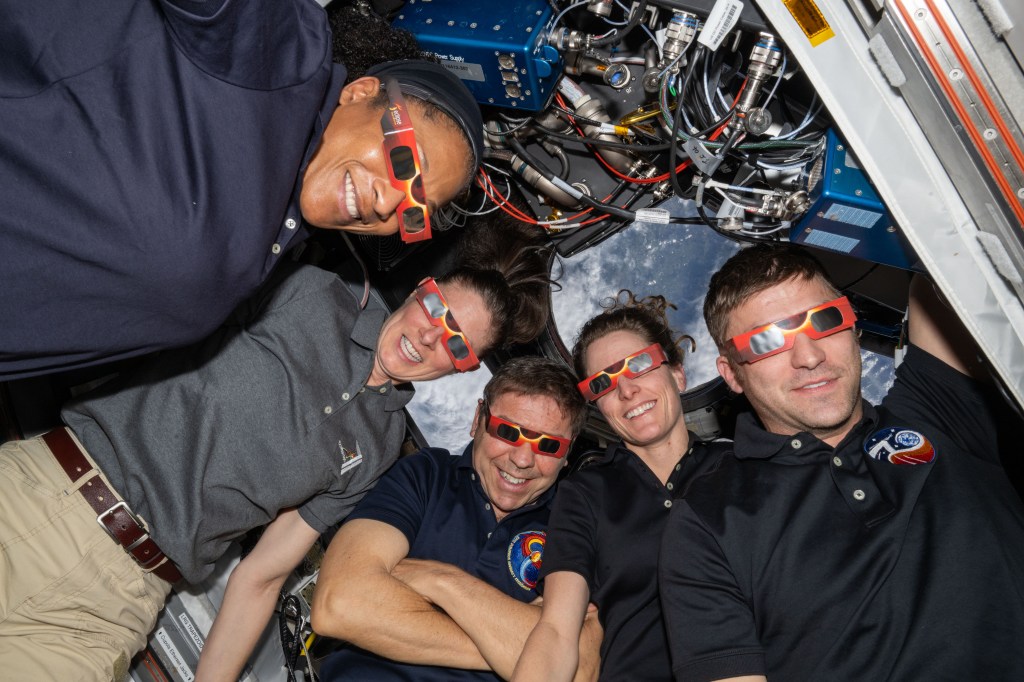
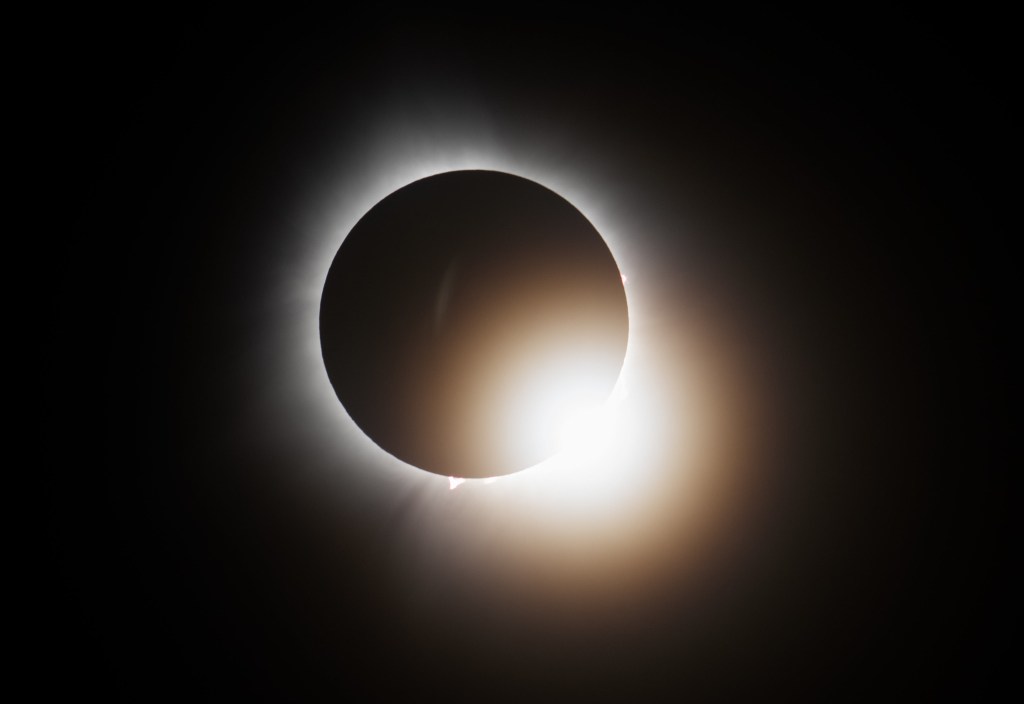
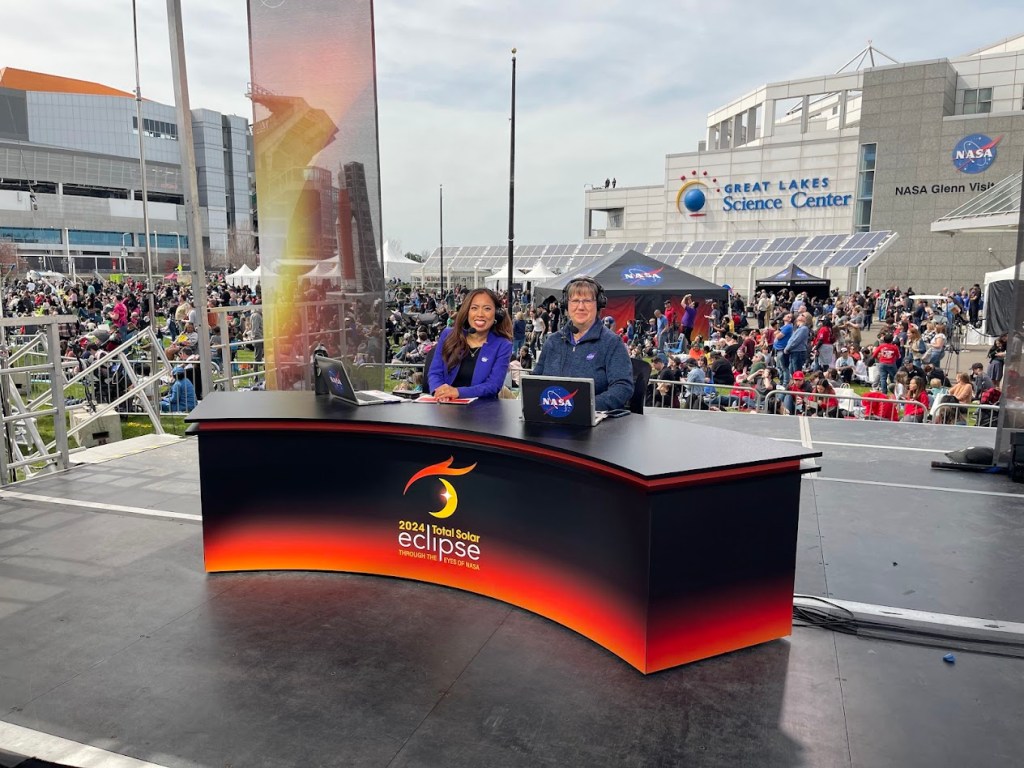
The Total Solar Eclipse
NASA’s Digital Campaign & Engagement
On April 8, 2024, millions of people looked up to experience a rare celestial event together — a total solar eclipse. NASA capitalized on this cosmic event to share the excitement of science and exploration.
When the Moon passed in front of the Sun, millions of viewers on Earth could see the wispy white corona of the Sun, which stretched into the sky, and experienced a temporary daytime darkness. With this campaign, we aimed to make sure everyone was able to safely watch the eclipse — either from events around the United States or by joining NASA’s livestream — and experience this celestial moment that demonstrates our connection with the solar system.
lIVESTREAm Views
~40 Million
Social media engagements
13 Million +
Web views on eclipse day
22 Million
in-person NASA event attendees
300,000
2024 Total Solar Eclipse: Through the Eyes of NASA
Eclipses are, by nature, location, and weather dependent. To help as many people as possible experience this great event, we developed a 3-hour-long broadcast that shared the eclipse with views across the path of totality. With 20 telescope views that spanned 3,000 miles across 7 states and 2 countries, plus live astronaut views from the International Space Station and sights from NASA’s WB-57 jet following the path, the livestream was an experience that only NASA could provide. Viewers at in person watch parties, like at NYC's Time Square, also joined in.
View on YouTubeSocial Media Campaign
NASA shared 1,264 posts about the eclipse across social media channels. Overall, these posts received more than 13.2 million engagements. More than 3.7 million of those engagements were on April 8.
#Eclipse2024 trended at #1 in North America and “Through the eyes of NASA” trended in the top 10. #NASA trended as high as #6 on X during the event
These posts pointed viewers to NASA's in-person eclipse-watching events, live stream, eclipse game, interactive map (which received 14 million views in the month leading up to the eclipse), and a detailed website filled with resources for science, citizen science, safety, and more. NASA's websites received over 22 million views on eclipse day.
Credits: NASA
To appeal to a wide range of audiences — from people of all ages, to science enthusiasts, to those who are new to skywatching, NASA shared a variety of posts, including:
- Video questions submitted by children and answered by scientists at NASA, designed to appeal to families and educators.
- Posts highlighting citizen science projects or a sky map of what could be visible during the eclipse for those who wanted to get more involved with eclipse science.
- A series of reels that showed people dressed up in inflatable Sun, Moon, and Earth videos, fighting for the spotlight and encouraging viewers to choose which team they’re on: Team Sun, Moon, or Earth. On the day of the eclipse, people voted on which team they choose in an interactive poll on social media — Team Moon won!
- Several popular reels across social media outlets, including one that prepared viewers with basic eclipse knowledge and received 16.7 million views on Instagram.
NASA also collaborated on digital content with major brands, including Peanuts, Crayola, Plaza Sésamo, LEGO, Barbie, Major League Baseball, and others, reaching over 67 million people and earning over 2.7 million engagements. Some highlights include:
- A video featuring NSYNC’s Lance Bass sharing information about how to watch the eclipse safely, using humor that referenced many of the group’s popular songs
Credits: NASA
- Videos with Major League Baseball players Paul DeJong and Steven Kwan
- Posts with the Office of Surgeon General highlighting mental health and how the eclipse can lead to connection with your community and loved ones, fighting the damaging impacts of loneliness.
- Posts from the Peanuts comics sharing eclipse information. Snoopy also made an appearance at in-person NASA events and on the NASA broadcast.
- Eclipse activities from LEGO shared on social media.
- A special eclipse donut shared on social media and in person from Krispy Kreme.
Media Engagement
This social media campaign was reflected in the success seen in media outlets who chose to promote the event on their own accounts and in their networks. NASA provided resources and experts to empower media to share eclipse science, safety information, and excitement with their audiences around the world. NASA personnel across the nation gave hundreds of interviews to domestic and international outlets in print, digital, TV, streaming, radio, and podcasts. In addition to English interviews, NASA provided dozens of interviews in Spanish.
Media By the Numbers
- The eclipse was featured in more than 440 newspapers on April 8 alone, including nearly 300 front-page stories.
- More than 70,000 stories about the eclipse were published between Jan. 1 - April 22, 2024.
- In preparation, on just March 8 and April 3, NASA conducted over 260 interviews for local and national television stations, including over 40 in Spanish.
NASA's In-Person Eclipse Events
After extensive promotion on social media, more than 300,000 people attended in-person events hosted by NASA or with NASA participation. These events were spread across big cities — like Cleveland, Dallas, and Austin — and smaller towns — like Russellville, Arkansas; Kerrville, Texas; and Houlton, Maine — giving urban and rural residents alike a chance to attend NASA events.
More than 400 NASA employees staffed dozens of unique events, where attendees could pick up solar viewing glasses, ask questions of NASA experts, engage with exhibits, see demonstrations and presentations, and watch the eclipse with expert commentary and safety guidance.
In addition to NASA participation in dozens of other events, NASA’s 12 key SunSpot events were located in:
- Kerrville, Texas — Louise Hays Park
- Stonewall, Texas — Lyndon B. Johnson National Historical Park
- Austin, Texas — multiple locations, including Austin Central Library
- Waco, Texas — multiple locations, including Baylor University
- Dallas, Texas — Dallas Arboretum & Dallas Cotton Bowl Stadium
- Russellville, Arkansas — Russellville Eclipse Festival
- Carbondale, Illinois — Southern Illinois University
- Indianapolis, Indiana — Indianapolis Motor Speedway
- Cleveland, Ohio — Great Lakes Science Center (NASA Glenn Visitor Center)
- Erie, Pennsylvania — multiple locations, including Mercyhurst University
- Niagara Falls, New York — multiple locations, including Niagara Falls State Park
- Houlton, Maine — Downtown Houlton















